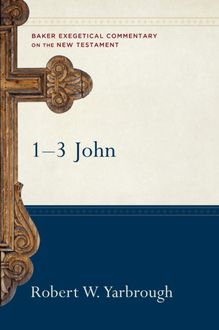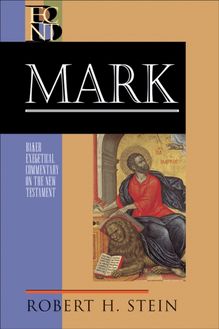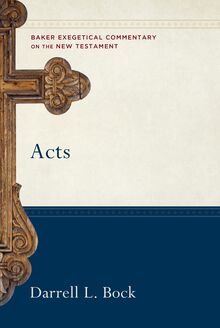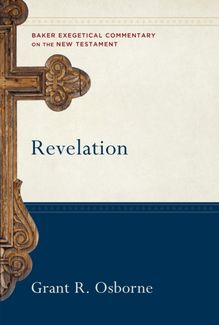-
 Univers
Univers
-
 Ebooks
Ebooks
-
 Livres audio
Livres audio
-
 Presse
Presse
-
 Podcasts
Podcasts
-
 BD
BD
-
 Documents
Documents
-
- Cours
- Révisions
- Ressources pédagogiques
- Sciences de l’éducation
- Manuels scolaires
- Langues
- Travaux de classe
- Annales de BEP
- Etudes supérieures
- Maternelle et primaire
- Fiches de lecture
- Orientation scolaire
- Méthodologie
- Corrigés de devoir
- Annales d’examens et concours
- Annales du bac
- Annales du brevet
- Rapports de stage
La lecture à portée de main
Vous pourrez modifier la taille du texte de cet ouvrage
Découvre YouScribe en t'inscrivant gratuitement
Je m'inscris1 Peter (Baker Exegetical Commentary on the New Testament) , livre ebook
Découvre YouScribe en t'inscrivant gratuitement
Je m'inscrisEn savoir plus
Vous pourrez modifier la taille du texte de cet ouvrage
En savoir plus

Description
Informations
| Publié par | Baker Publishing Group |
| Date de parution | 01 avril 2005 |
| Nombre de lectures | 0 |
| EAN13 | 9781585583621 |
| Langue | English |
Informations légales : prix de location à la page 0,1080€. Cette information est donnée uniquement à titre indicatif conformément à la législation en vigueur.
Extrait
1 PETER
Baker Exegetical Commentary on the New Testament
ROBERT W. YARBROUGH AND ROBERT H. STEIN, EDITORS
Volumes now available: Luke Darrell L. Bock John Andreas J. K stenberger Romans Thomas R. Schreiner 1 Corinthians David E. Garland Philippians Mois s Silva 1 Peter Karen H. Jobes Revelation Grant R. Osborne
Karen H. Jobes (Ph.D., Westminster Theological Seminary, Philadelphia) is associate professor of New Testament at Westmont College in Santa Barbara, California. She has written a commentary on Esther (NIVAC) and has coauthored with Mois s Silva Invitation to the Septuagint .
1 PETER
KAREN H. JOBES
Baker Exegetical Commentary on the New Testament
2005 by Karen H. Jobes
Published by Baker Academic a division of Baker Publishing Group P.O. Box 6287, Grand Rapids, MI 49516-6287 www.bakeracademic.com
Printed in the United States of America
All rights reserved. No part of this publication may be reproduced, stored in a retrieval system, or transmitted in any form or by any means-for example, electronic, photocopy, recording-without the prior written permission of the publisher. The only exception is brief quotations in printed reviews.
Library of Congress Cataloging-in-Publication Data Jobes, Karen H.
1 Peter / Karen H. Jobes.
p. cm. - (Baker exegetical commentary on the New Testament) Includes bibliographical references.
ISBN 0-8010-2674-1 (cloth) 1. Bible. N.T. Peter, 1st-Commentaries. I. Title. II. Series. BS2795.53.J63 2005 227p.9207-dc22 2005004110
To my husband, Buzz, who has always exemplified Ephesians 5:25 by his support for my work
Contents
Series Preface
Author s Preface
Abbreviations
Transliteration
Map
Introduction to 1 Peter
I. A Greeting to the Christian Diaspora of Asia Minor (1:1-2)
II. The Opening of the Letter: Reassurance for God s People (1:3-2:10)
A. Doxology as the Basis for the Christian Life (1:3-12)
B. Be What You Are (1:13-2:3)
C. The Identity of God s People (2:4-10)
III. As God s People, Live Godly Lives (2:11-4:11)
A. Commendable Social Behavior as God s People (2:11-3:7)
B. The Inner Qualities of Righteous Living (3:8-12)
C. Suffering Unjustly for the Name of Christ (3:13-4:11)
IV. Consolation for the Suffering Flock (4:12-5:11)
A. Two Final Thoughts about Suffering for Christ (4:12-19)
B. Final Exhortations to the Community (5:1-11)
V. The Letter Closing: Final Words and Greetings (5:12-14)
Excursus : The Syntax of 1 Peter: How Good Is the Greek?
Works Cited
Series Preface
The chief concern of the Baker Exegetical Commentary on the New Testament (BECNT) is to provide, within the framework of informed evangelical thought, commentaries that blend scholarly depth with readability, exegetical detail with sensitivity to the whole, and attention to critical problems with theological awareness. We hope thereby to attract the interest of a fairly wide audience, from the scholar who is looking for a thoughtful and independent examination of the text to the motivated lay Christian who craves a solid but accessible exposition.
Nevertheless, a major purpose is to address the needs of pastors and others involved in the preaching and exposition of the Scriptures as the uniquely inspired Word of God. This consideration affects directly the parameters of the series. For example, serious biblical expositors cannot afford to depend on a superficial treatment that avoids the difficult questions, but neither are they interested in encyclopedic commentaries that seek to cover every conceivable issue that may arise. Our aim, therefore, is to focus on those problems that have a direct bearing on the meaning of the text (although selected technical details are treated in the additional notes).
Similarly, a special effort is made to avoid treating exegetical questions for their own sake, that is, in relative isolation from the thrust of the argument as a whole. This effort may involve (at the discretion of the individual contributors) abandoning the verse-by-verse approach in favor of an exposition that focuses on the paragraph as the main unit of thought. In all cases, however, the commentaries will stress the development of the argument and explicitly relate each passage to what precedes and follows it so as to identify its function in context as clearly as possible.
We believe, moreover, that a responsible exegetical commentary must take fully into account the latest scholarly research, regardless of its source. The attempt to do this in the context of a conservative theological tradition presents certain challenges, and in the past the results have not always been commendable. In some cases, evangelicals appear to make use of critical scholarship not for the purpose of genuine interaction but only to dismiss it. In other cases, the interaction glides over into assimilation, theological distinctives are ignored or suppressed, and the end product cannot be differentiated from works that arise from a fundamentally different starting point.
The contributors to this series attempt to avoid these pitfalls. On the one hand, they do not consider traditional opinions to be sacrosanct, and they are certainly committed to do justice to the biblical text whether or not it supports such opinions. On the other hand, they will not quickly abandon a long-standing view, if there is persuasive evidence in its favor, for the sake of fashionable theories. What is more important, the contributors share a belief in the trustworthiness and essential unity of Scripture. They also consider that the historic formulations of Christian doctrine, such as the ecumenical creeds and many of the documents originating in the sixteenth-century Reformation, arose from a legitimate reading of Scripture, thus providing a proper framework for its further interpretation. No doubt, the use of such a starting point sometimes results in the imposition of a foreign construct on the text, but we deny that it must necessarily do so or that the writers who claim to approach the text without prejudices are invulnerable to the same danger.
Accordingly, we do not consider theological assumptions-from which, in any case, no commentator is free-to be obstacles to biblical interpretation. On the contrary, an exegete who hopes to understand the apostle Paul in a theological vacuum might just as easily try to interpret Aristotle without regard for the philosophical framework of his whole work or without having recourse to those subsequent philosophical categories that make possible a meaningful contextualization of his thought. It must be emphasized, however, that the contributors to the present series come from a variety of theological traditions and that they do not all have identical views with regard to the proper implementation of these general principles. In the end, all that really matters is whether the series succeeds in representing the original text accurately, clearly, and meaningfully to the contemporary reader.
Shading has been used to assist the reader in locating salient sections of the treatment of each passage: introductory comments and concluding summaries. Textual variants in the Greek text are signaled in the author s translation by means of half-brackets around the relevant word or phrase (e.g., {Gerasenes}), thereby alerting the reader to turn to the additional notes at the end of each exegetical unit for a discussion of the textual problem. The documentation uses the author-date method, in which the basic reference consists of author s surname + year + page number(s): Fitzmyer 1992: 58. The only exceptions to this system are well-known reference works (e.g., BDAG, LSJ, TDNT ). Full publication data and a complete set of indexes can be found at the end of the volume.
Robert W. Yarbrough Robert H. Stein
Author s Preface
Writing a commentary is a challenging endeavor. First, one is constrained by the flow and content of the biblical text itself. Rather than having the freedom to let one s thoughts be structured as they may, the author of a commentary must follow the structure of the biblical text, even where its meaning is difficult or obscure. Second, after about two thousand years of reflection on the New Testament (NT), it is daunting to say something that is new enough to warrant another commentary but not so innovative as to be heretical. Nevertheless, it is truly a great privilege to present the interpretive heritage of the Christian church in a fresh light to today s serious Bible readers.
In this commentary I hope to offer three distinct contributions to that heritage. First, I present a new theory on the historical background of the book of 1 Peter. Interpretive tradition has assumed that the letter was written to indigenous Christians of Asia Minor converted either by the evangelization of the apostle Peter on his travels between Jerusalem and Rome or by anonymous evangelists from the Pauline churches. This commentary presents the scenario that the Christians to whom Peter writes were converted elsewhere, probably Rome, and then displaced to Asia Minor. Peter, with whom they had some previous association, writes to these foreigners and resident aliens, using their personal situation to lend power to his spiritual application of the motif.
Second, I attempt to make the role of the Septuagint (LXX) for interpreting 1 Peter more accessible to the reader. It was the ancient Greek translation of the Old Testament (OT) that formed the scriptural context in which Peter wrote. Peter does not proof-text when he cites the OT but applies the context of the passage as it occurs in the LXX to his Christian readers in Asia Minor. By interpreting his letter against the context of the passages quoted from the LXX, I seek to utilize an exegetical method that is truer to the historical origin of the letter.
Third, by presenting an analysis of the syntax of 1 Peter based on principles of bilingual interference, this study questions the oft-repeated opinion about the hi
-
 Univers
Univers
-
 Ebooks
Ebooks
-
 Livres audio
Livres audio
-
 Presse
Presse
-
 Podcasts
Podcasts
-
 BD
BD
-
 Documents
Documents
-
Jeunesse
-
Littérature
-
Ressources professionnelles
-
Santé et bien-être
-
Savoirs
-
Education
-
Loisirs et hobbies
-
Art, musique et cinéma
-
Actualité et débat de société
-
Jeunesse
-
Littérature
-
Ressources professionnelles
-
Santé et bien-être
-
Savoirs
-
Education
-
Loisirs et hobbies
-
Art, musique et cinéma
-
Actualité et débat de société
-
Actualités
-
Lifestyle
-
Presse jeunesse
-
Presse professionnelle
-
Pratique
-
Presse sportive
-
Presse internationale
-
Culture & Médias
-
Action et Aventures
-
Science-fiction et Fantasy
-
Société
-
Jeunesse
-
Littérature
-
Ressources professionnelles
-
Santé et bien-être
-
Savoirs
-
Education
-
Loisirs et hobbies
-
Art, musique et cinéma
-
Actualité et débat de société
- Cours
- Révisions
- Ressources pédagogiques
- Sciences de l’éducation
- Manuels scolaires
- Langues
- Travaux de classe
- Annales de BEP
- Etudes supérieures
- Maternelle et primaire
- Fiches de lecture
- Orientation scolaire
- Méthodologie
- Corrigés de devoir
- Annales d’examens et concours
- Annales du bac
- Annales du brevet
- Rapports de stage




















